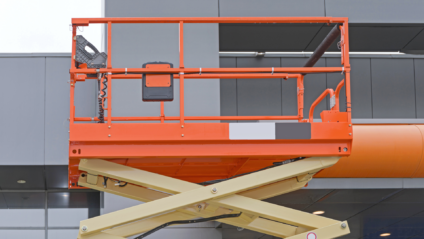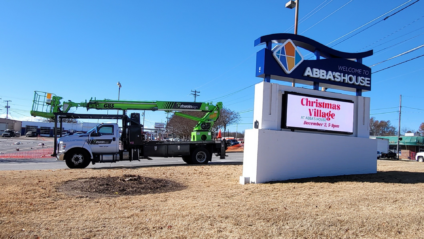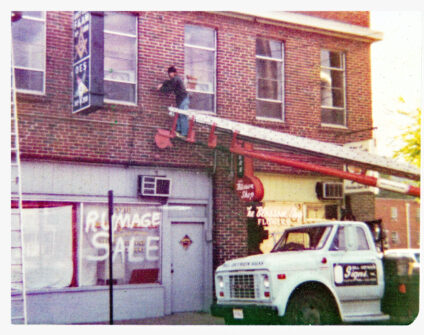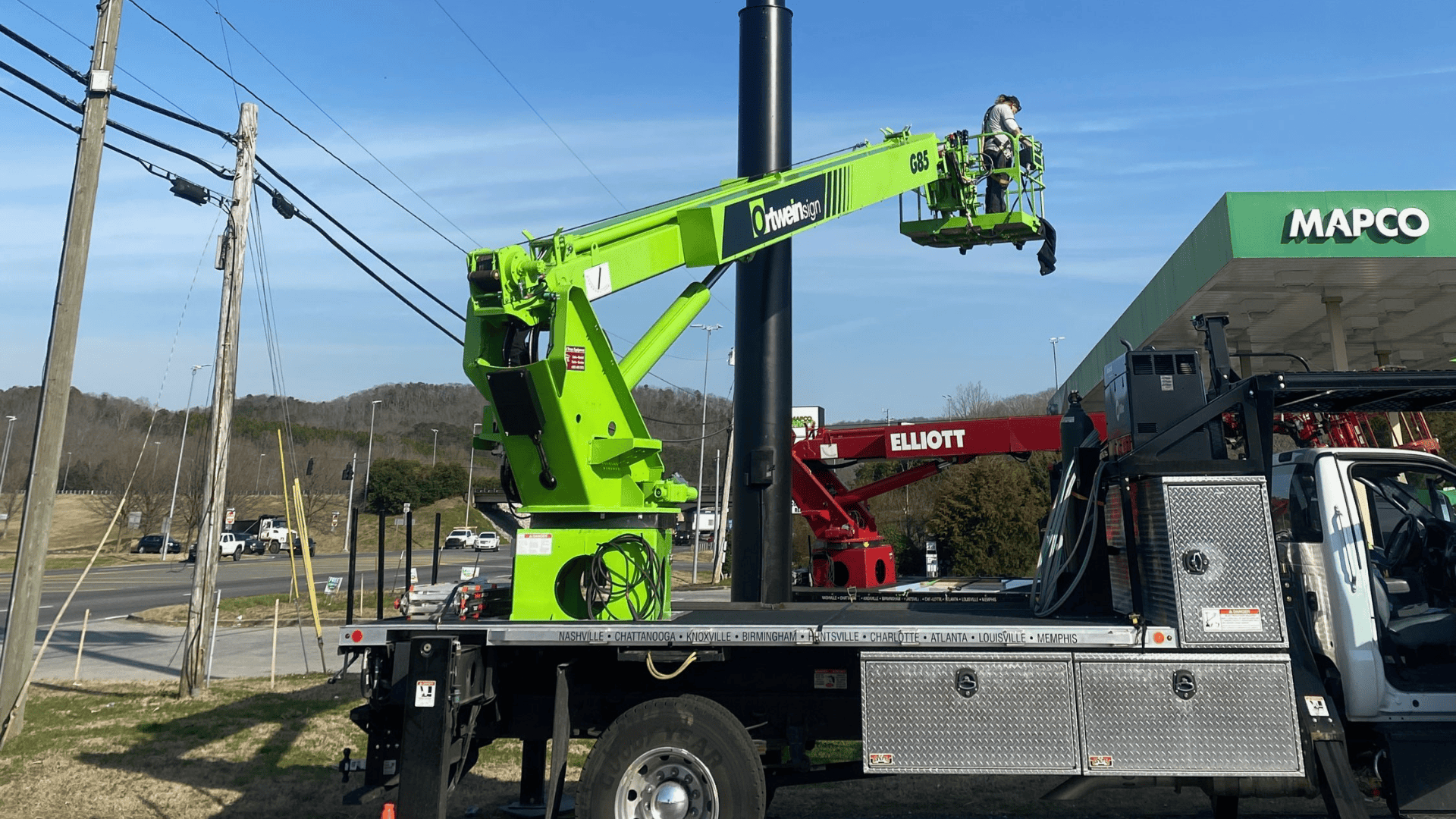Our sign installers and service managers support you. Our fleet of cranes supports our installation and service team. Today we’re discussing the role of cranes in the signage industry, how sign installation has evolved through history, alongside the technology, and how they help our team help your business!
Ladders, Lifts, and Cranes: Oh My!
Our premiere Ortwein Sign installation and service teams may find themselves on the top of a skyrise, or digging a hole in front of a business, or anywhere in between. The unique challenges and needs of a sign installation means they have to be ready for a whole host of distinct jobs, and though our project managers excel at giving them the information ahead of time, our installation and service team needs to know we have the tools for any job. That is especially important when it comes to our fleet of trucks and cranes that provide very literal support when lifting and installing signs or when needing to repair a sign at some height.
We’ll break down in this section the various styles of tools we use everyday.
Ladders
Typically the bulk of our work is done in crane trucks; however, for those smaller jobs or easy to reach jobs we’ll still bring out our A-frame ladders to get the job done.
Types of Lifts Used in Sign Industry
Lifts are exactly as their name suggests as they are tools used to help a person go up in height without the use of a crane truck. There are many types of lifts including, according to Sunbelt Rentals, “scissor lifts, manlifts, atrium lifts, and straight boom manlifts”. Sunbelt also breaks these down into two categories: elevated work platforms (EWP) and mobile elevating work platforms (MEWP), differentiating between the stationary and mobile platforms.
Scissor Lifts

According to Handling.com, “standard scissor lifts extend to a height range of 20 to 60 ft.”, though each lift may vary in its capabilities.
Articulating Boom Lifts (aka Knuckle Lift)
According to BigRentz.com, articulating boom lifts are “aerial machines used to access difficult-to-reach locations.”
Manlifts
InnovativeReach.com defines a manlift as “a customized aerial work platform (AWP) designed to lift a person and their equipment safely on both indoor and outdoor work sites.”
Atrium Lifts
Sunbelt defines Atrium Lifts as a lift that “provides outstanding reach with limited or narrow access and is equipped with smooth, proportional electro-hydraulic controls.”
Telescopic Boom Lifts (aka Straight Lifts)
According to JLG, Telescopic Boom Lifts have “a mast that extends in a straight line by using one or more telescoping boom sections.”
Crane Trucks

Our Ortwein Sign fleet consists of several crane trucks that reach heights of anywhere between 60’ and 125’ feet, and include Elliot 60’s and Elliot 85’ crane trucks and a Peterbilt 125’ crane and basket. By having a diverse fleet consisting of crane types that reach a variety of heights it allows us to more ably assess the situation at hand, and to send the crane (or cranes) needed for the job. This means we get the job done, and it allows us to direct our other cranes where they’re needed.
Here are the primary types of Crane Trucks you’ll see used in the sign industry:
Bucket Truck
CustomTruck.com identifies a Bucket Truck (aka a Boom Truck) as “any truck with a mounted bucket or “boom” that extends to reach distant heights.”
Basket Truck
A Basket Truck is similar to a Bucket Truck; however, instead of a bucket they have a more open space for the installer to work in.
Sky Hook Truck

it is a ladder mounted to the back of a boom truck making more akin to a hybrid crane and ladder truck. Though they are used as frequently now; older sign installers will remember them no doubt as they were prevalent back in the day.
Ladder Truck
A ladder truck is similar to a Sky Hook truck but its smaller and as you extend it there’s a platform that will drop out for the installer to stand on.

